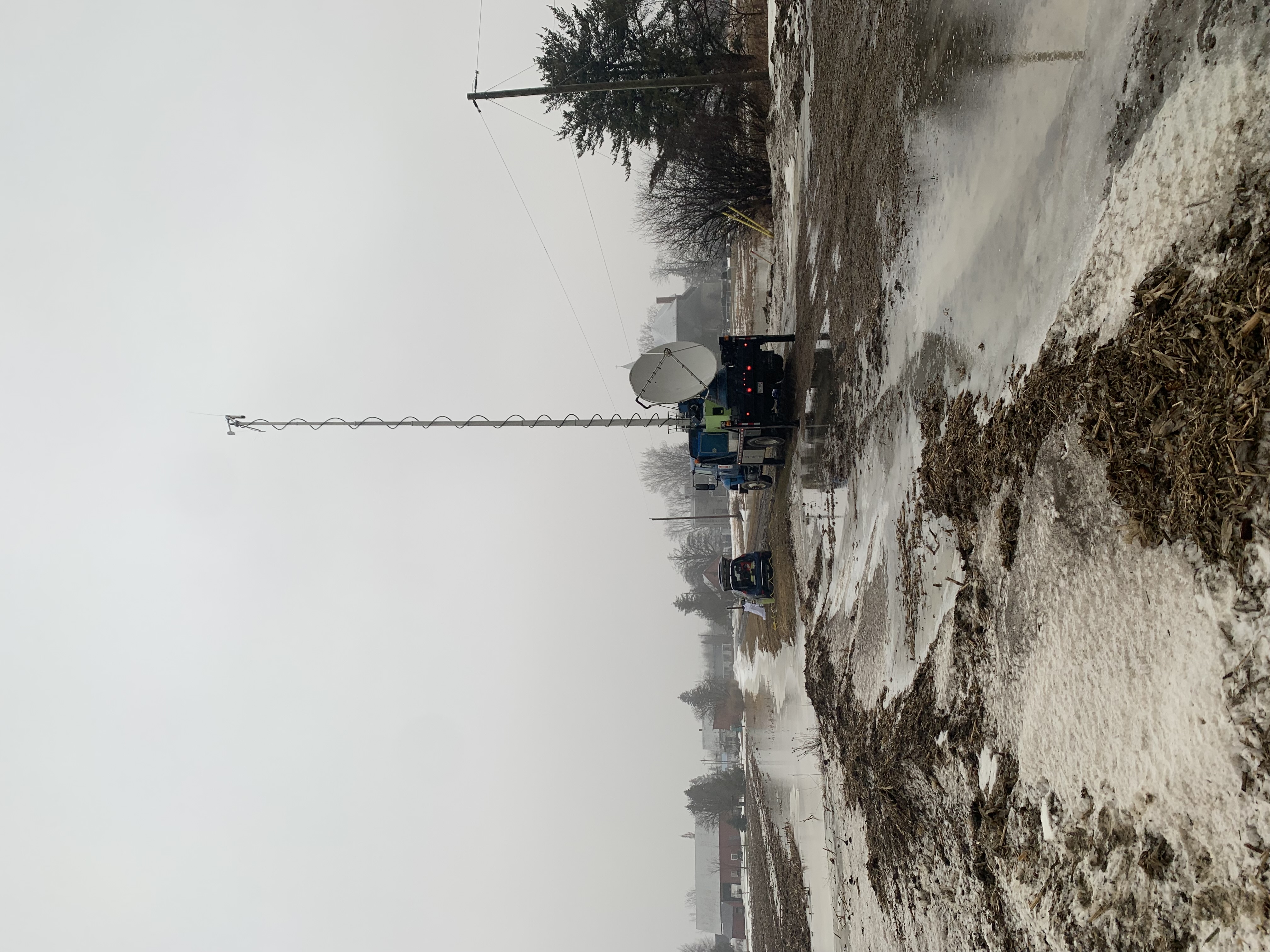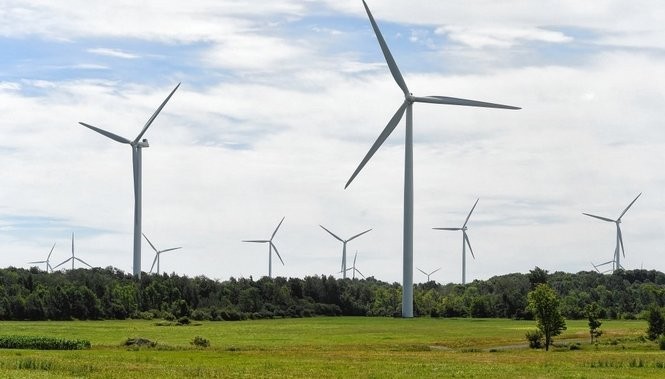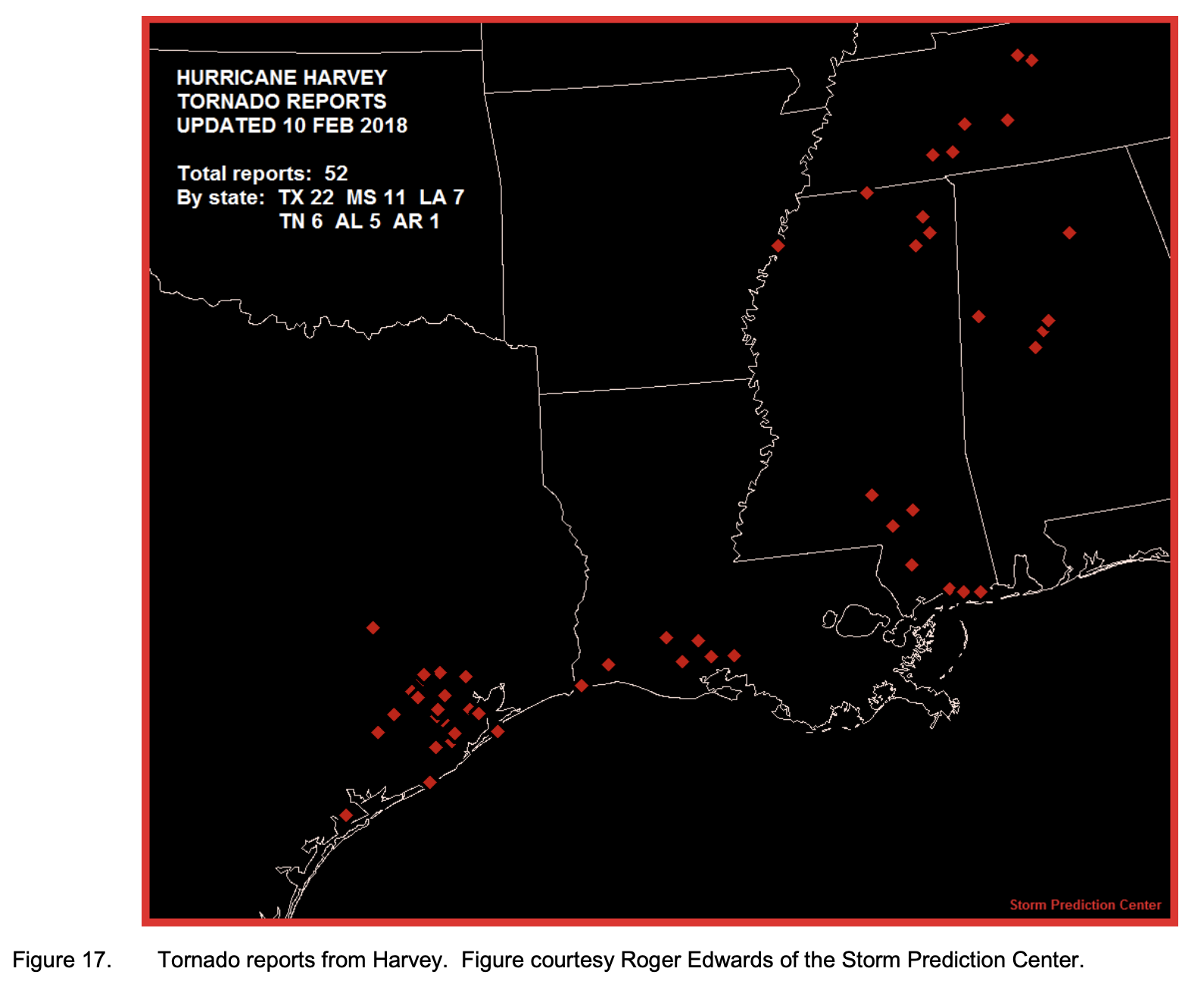Doctoral Work:
Advisors: Marina Astitha and Diego Cerrai
Overview:
My doctoral work is supported by the Eversource Energy Center and with an emphasis on improving machine learning models to predict weather-related power outages. Currently, I am focusing on the winter storm models, which generally are the lowest performing models; my field of research is on improved detection of wet snow events by combining numerical model output to create a wet snow index. This index incorporates snow density, a key predictor of winter time power outages, to generate an impact-based relationship. In addition to this work, I am aiding in the development of other models by concentrating on what meteorological variables are important and seeing if new variables can be incorporated. I also provide operational power outage forecasts for Eversource Energy and United Illuminating (Avangrid).
In addition to working on power outage forecasting, I am processing and analyzing winter precipitation data collected at UConn as a part of the NASA GPM ground validation field campaign. This campaign occurred over the winters of 2021-2022 and 2022-2023, as well currently during the winter of 2023-2024m and deployed a suite of instruments to measure a variety of winter precipitation characteristics. To learn more about snow from a microphysical perspective, and how this data can improve remote sensing retrieval algorithms, I am currently processing all the data for the winter of 2021-2022 and 2022-2023. This data will be applied to assess winter storms and key snow microphysical processes. I am also the lead author on a Bulletin of the American Meteorological Society (BAMS) article about this field campaign that is in review and will be published later this year.
Selected Presentations and slides:
15th Conference on Weather, Water, Climate and the New Energy Economy (January 2024): Slides
24th Symposium on Meteorological Observation and Instrumentation (January 2024): Slides
Master’s Work:
Thesis Topic: Probabilistic Forecasting of Winter Mixed Precipitation Types in New York State Utilizing a Random Forest
Advisors: Kristen Corbosiero, Andrea Lang, Nick Bassill, and Ross Lazear
Project Overview:
My master’s work was supported by a NOAA Collaborative Science, Technology, and Applied Research (CSTAR) program between the National Weather Service (NWS) and the University at Albany. The focus of my research was implementing machine learning techniques on large datasets to help improve the forecasting ability of winter mixed precipitation events. In addition to combining machine learning with big data, my project also consisted of an operational component; through collaboration with NWS Albany forecasters, I created an operational tool to help them with forecasting winter mixed precipitation events.
Abstract of Master’s Thesis:
Operational forecasters face a plethora of challenges when making a forecast; they must consider multiple data sources ranging from radar and satellites to surface and upper air observations, to numerical weather prediction output. Forecasts must be done in a limited window of time, which adds an additional layer of difficulty to the task. These challenges are exacerbated by winter mixed precipitation events where slight differences in thermodynamic profiles or changes in terrain create different precipitation types across small areas. In addition to being difficult to forecast, mixed precipitation events can have large-scale impacts on our society.
To aid forecasts for these events, the goal of this thesis is to take the multiple data sources used by forecasters and combine them together using machine learning to improve forecasting ability for mixed precipitation events. The expectation is that by employing a machine learning framework, forecasters will have more time to spend analyzing the most difficult portions of the forecast.
In order to achieve this goal, Community Collaborative Rain, Hail and Snow Network (CoCoRaHS) daily observations from trained reporters between January 2017 to September 2020 were used to identify precipitation events that included rain, snow, freezing rain, and sleet. The data associated with the timing of these mixed precipitation events were collected from the New York State Mesonet, National Weather Service upper air soundings, High-Resolution Rapid Refresh model (HRRR), and North American Mesoscale forecast model with a nested domain (NAMNEST). A random forest (RF) machine learning algorithm was trained and tested on cases identified from the CoCoRaHS reports that were matched with the meteorological datasets. Internal testing identified the best combinations of meteorological variables and data sources to make operational forecasts with.
An operational website was developed to display the products made with the output of the RF. The website was operational in real-time during the 2021-2022 winter season, and the RF was also run to create the same products for the 2020-2021 winter season. This was done to increase the sample size of the forecast guidance to do verification on. Verification was completed for the winters of 2020-2021 and 2021-2022 by using ASOS and mPING observations as ground truth. Results from the verification process gave a positive indication that certain products can provide accurate precipitation type forecasts to be employed in combination with analysis by an operational forecaster during winter mixed precipitation events. The operational products were expanded for the winter of 2022-2023, and the operational website currently has five operational forecasting tools, four of which provide probabilistic winter precipitation type forecasts for rain, freezing rain, sleet, and snow.
To learn more about this project and view the website, please click here: Albany Data Fusion Winter Weather AI Project
Publications:
Filipiak, B. C., N. P. Bassill, K. L. Corbosiero, A. L. Lang, and R. A. Lazear, 2023: Probabilistic Forecasting Methods of
Winter Mixed Precipitation Events in New York State Utilizing a Random Forest. Artif. Intell. Earth Syst., 2,
https://doi.org/10.1175/AIES-D-22-0080.1.
Selected Presentations and slides:
WPC Winter Weather Experiment (December 2021): Slides
AMS Annual Joint Conference with the 31st Conference on Weather Analysis and Forecasting (WAF)/27th Conference on Numerical Weather
Prediction (NWP) and 21st Conference on Artificial Intelligence for Environmental Science (January 2022): Slides
Master’s Thesis Presentation (December 2022): Slides
Other Select Projects:
Completed:

Winter Precip Type Research Multi-Scale Experiment (WINTRE-MIX) – February and March 2022
Advisor: Justin Minder (UALBANY)
Summary of Field Work:
I participated in the WINTRE-MIX Field Campaign located in the St. Lawerence and Champlain valleys. This field study’s goal was to improve the understand and prediction of precipitation types that occur in near freezing conditions on the synoptic, mesoscale, and microscale, especially in areas of complex terrain which is abundant in the domain of interest.
My involvement in the field operations was working on collecting ground based observations to supplement the existing mesonet networks and aircraft observations during Intensive Observing Periods (IOPs). On the ground, I collaborated with scientists from the University of Colorado and the University of Illinois at Urbana-Champaign Flexible Array of Radars and Mesonets to collect precipitation type observations, upper air profiles from radiosondes, and radar data from DOW6, DOW7, and COW radars. Over the 6 week period, I participated in 7 of the 11 IOPs during all hours of the day and night; during the IOPs, I helped with over 20 successful radiosonde launches, collected precipitation type observations every 10 minutes, took macro-photographs of frozen precipitation, and assisted with radar operations.
Videos and News Articles:
UAlbany Video Summary, UAlbany Article

Renewable Energy Droughts: An Analysis of Renewable Energy Droughts in New York State between 2018 and 2022
Advisors: Jeff Freedman and Richard Perez (UALBANY)
Project Overview:
As part of my Renewable Energy Issues graduate course, I conducted an analysis of renewable energy droughts at 3 locations in New York. This project was expanded to include 17 NYS Mesonet Profiler locations as well as offshore wind data. The goal was to examine when and for how long do renewable energy droughts occur in New York. Through analysis of Lidar data and insolation data from Solar Anywhere, the data was processed, and periods of underperformance were noted. We have 2 key definitions of droughts: 1) Energy Production Drought: A period where an energy resource’s daily capacity factor is less than its averaged capacity factor for that location or region regardless of season; and, 2) Renewable Energy Drought: A period where multiple renewable energy resources experience an energy production drought at the same time.

NSF REU Texas A&M: Diurnal and Spatial Variability of Tornadogenesis and Forecasting in Tropical Cyclones – June and July 2019
Advisor: Chris Nowotarski (Texas A&M)
Abstract:
Landfalling tropical cyclones generate many hazards like storm surge, wind damage, heavy rainfall totals, potential for flash flooding, and tornadoes. Forecasting these multiple events is problematic as forecasters are unable to focus on just one type of hazard. Given this and less clarity in the environmental parameters and radar attributes of the cells that produce them, there is often a high false alarm rate for tornado warnings within tropical cyclones. To improve the ability to forecast tornadoes in these unique conditions, understanding the relative location and timing of tornadic events is key. Additionally, identifying differences in the near-storm environmental conditions associated with tornadic and nontornadic cells and their spatial and temporal variability is expected to yield more accurate forecasts.
Using storm reports and radar data, cells were identified as tornadic or non-tornadic, and tornadoes were identified as warned or non-warned for all landfalling US tropical cyclones in the 2018 season. Soundings of the near-storm environments for each cell were gathered from Rapid Refresh (RAP) numerical model analyses, from which relevant convective parameters were calculated and compared. This analysis showed there was a clear diurnal cycle in tropical cyclone tornadoes, as there was a peak in tornado frequency in the late afternoon. The results revealed how changes in the near-storm environment contributed to the diurnal cycle in tornadoes. These same parameters were examined spatially and showed patterns of change relative to time after landfall and distance from the tropical cyclone center. Finally, variability in forecasting skill scores (both spatially and temporally) relative to the diurnal cycle and tropical cyclone position were examined.
Selected Presentations:
AMS 19th Annual Student Conference Poster Session (January 2020): Poster
